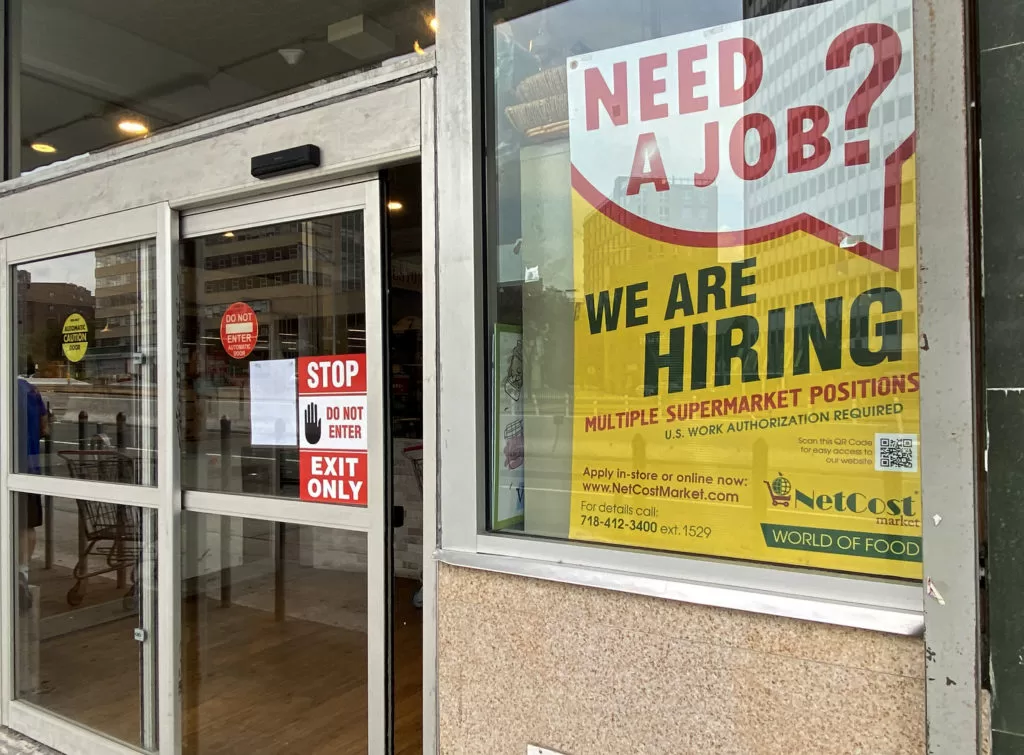Labor report paints mixed picture, showing U.S. job openings fell in July while hiring rose | PBS News
The US economy received mixed news on Friday, September 6, 2024, with the release of the latest jobs report. The unemployment rate ticked down to 4.2%, a slight improvement from July’s 4.3%, while 142,000 jobs were added to the economy. Although this job growth marks a rebound from the revised 89,000 figure in July, it fell short of economists’ expectations, leaving investors and analysts cautiously optimistic.
The news comes at a critical time for the US economy, with traders closely watching the Federal Reserve’s upcoming policy meeting on September 17-18. A quarter-point cut in interest rates is widely expected, with 69% of traders predicting this move, according to the CME FedWatch Tool. However, the possibility of a half-point cut remains on the table. The decision is expected to be influenced by economic indicators like the upcoming Consumer Price Index (CPI) report, which will provide more clues about inflation trends and the Fed’s next steps.
The jobs report reflects a slowing labor market that has been under pressure in recent months. The job growth figure, while an improvement from the previous month, is still below expectations, and the Federal Reserve has been grappling with the delicate balance of controlling inflation without stifling economic growth. A more severe drop in job creation could signal a larger slowdown, prompting quicker actions from the Fed.
On Wall Street, the market responded negatively to the news. The Dow Jones Industrial Average dropped by 410 points, or 1%, while the S&P 500 fell 1.7% and the Nasdaq Composite took the biggest hit, losing 2.6%. Investors had hoped for stronger job growth and clearer signals from the Federal Reserve on the direction of interest rates. The result was the worst week for US stock markets this year.
Despite these concerns, businesses are showing resilience. According to a Federal Reserve report released earlier in the week, many companies are not planning any major layoffs in the near future. The Fed’s Beige Book report, a collection of economic data and anecdotes from across the country, indicates that while employers have cut shifts, reduced hours, and left job vacancies unfilled, large-scale layoffs remain rare. In regions such as New England and New York, companies are maintaining their workforce levels, even if they are not planning significant expansions.
Layoffs, a normal occurrence in any economy, have not spiked significantly. In July, there were 1.76 million layoffs and discharges in the US, a number that is relatively stable. Jobless claims also remain historically low, which is a positive sign that the labor market is holding steady, despite slower hiring.
For now, economists and investors will be looking to the Fed’s next move. The data from the jobs report, while not catastrophic, does highlight the ongoing challenges the economy faces. If the job market continues to soften, it could prompt the Fed to take more aggressive actions to avoid a deeper downturn. Conversely, if inflation remains a primary concern, the Fed could opt for a more measured approach, focusing on gradual rate cuts rather than more drastic measures.
The coming weeks will be crucial in determining the direction of the US economy. With key data releases on the horizon, including the CPI report and other economic indicators, both the Federal Reserve and market participants will be watching closely to see how the economy adapts to slowing job growth and persistent inflation. The Fed’s decision at its September meeting could set the tone for the remainder of the year, influencing everything from interest rates to market sentiment.
The mixed signals from the labor market underscore the complexity of the current economic landscape. While the drop in the unemployment rate is encouraging, the slower pace of hiring is a cause for concern. Investors, businesses, and consumers alike will be looking for signs of stabilization in the weeks ahead. Whether the Fed will step in with more aggressive measures or take a cautious approach remains to be seen. All eyes are now on the September meeting and what it will mean for the future of the US economy.
#USJobsReport #EconomyUpdate #UnemploymentRate #FederalReserve #StockMarketNews
